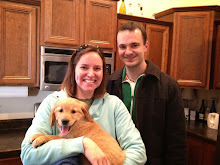Today I sprayed the first of the basecoat. I sprayed the door edges and underside of the hood, just two coats of base; it covered very well and I didn't want to waste expensive base on these less than essential areas if it wasn't needed. All parts are given one seal coat of unreduced epoxy before they get base. This ensures the surface is a consistent color and all filler and bare metal sand through spots are covered. If the epoxy is sprayed on smooth as glass with no imperfections or dust, then I'll just scuff with red scotchbrite and spray, as I did with these tonight. However, I can not achieve this level of perfection most of the time (or anywhere it counts) so I just plan on wet sanding the epoxy seal coat with 600, this ensures a perfect surface for base. More on that later.
As stated, these parts were just scuffed well with red scotchbrite, cleaned with wax and grease remover (SPI), and received two coats of the ProSpray base, with 5-10 min of flash between. Tomorrow I will clear.
It is so important to not just take your gun and immediately go to town on your panel, especially with a metallic. In a less visible area, just spray a foot, stand back and watch it for a few minutes and see what it does. I had some mottling initially, and took me awhile to get my gun dialed in just right, coupled with the right distance from the panel and speed. Eventually I got it perfect and it was smooth sailing after that.
But tonight I was plagued with technical difficulties; first the ballast went out in one of the angled flourescents in the ceiling, so I did not have that light. Next, I had an air leak in my filter system from the cheap o-ring in it going bad. Then, the filters on my exhaust fan got full of overspray because I did not clean them out first, and the exhaust was not doing a good job of clearing the room of fumes and overspray. Then my mask seal around my face was leaky and I took a big hit, which has left me not feeling well all night. To make matters worse, the protective cover on my lens made everything blurry so I had to peel it off. But eventually my facemask started getting covered with overspray so I still had that obstruction. It was tough and tomorrow will be a new day, starting with repairs. I'll make an entry on my paintbooth as well.
 |
| I have full protection head to toe--also important for keeping your painting clean. Keep your paint suit clean and all times and store in a plastic bag. The booties are attached to the suit so I hang them out of the bag. I fear the full-faced respirator isn't enough, as I'm not confident in its filter effectively capturing all the bad things. |
 |
| Panels scuffed and ready for base coat. |
 |
| Base coat on the bottom of the hood completed. This will sit overnight until it gets cleared tomorrow. |
 |
| Just two coats, I was happy with the outcome. No peel, smooth and consistent coat with no mottling or stripes. |

















